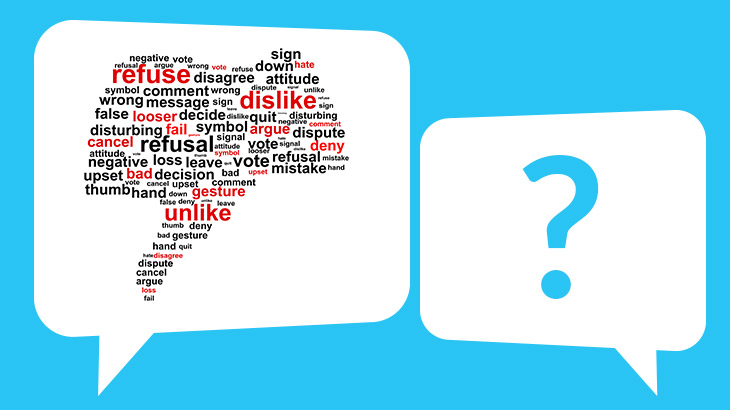Selecting a social media influencer as part of a social media campaign
When creating a relationship with a social media influencer it is crucial to ensure that the correct person is chosen. This blog will talk about the process of creating this partnership and the potential risks and rewards of this new professional relationship. Just some of the benefits of working with a social media influencer in this modern day are the credibility the can add to a small new brand, they add a fresh perspective and they can generate a large amount of exposure in a small amount of time (Cabrera, 2018). It is important for a business to look at their required Return on Investment (ROI) of selecting an influencer to work with their brand.
Criteria for deciding which influencer is the best fit for your brand
Objectives
Firstly, the brand must identify what the brand hopes to achieve from working with a social media influencer. This end goal would be classified as their objectives (ChiefMarketer.com, 2014). By deciding on the brand’s end goal as well as the end goal of the influencer, both parties can achieve a beneficial gain from the relationship. This will also ensure both parties understand the reason for the relationship.

Relevance
One of the most important characteristics of a social media influencers capabilities is their relevance to the brand (Hamann, 2018). If a brand is looking for a social media influencer to work with, it is crucial to ensure that the influencers image is fluid with that of the brand. It is no use in a gaming app partnering with an Instagram art account that has never shown an interesting in gaming. This is because their follower base will consist mostly of art fans who expect to see art related posts (Hamann, 2018). Therefore, the gaming app would be less likely to gain positive engagement from this campaign compared to if they partnered with an Instagram account that posts about mobile phones and game-related content.
Engagement levels
One of the most prominent methods of measuring the success of a social media campaign or post is the engagement level. Before creating a contract with an influencer, a brand should look at the influencers different levels of engagement (Vivo, 2017). For example, the simplest one would be how many followers they have, this could also be compared to other influencers in their area. Another aspect of engagement is how many likes and comments each post will receive. Although this measurement is important it is crucial to look at them in a collaborative aspect, so the brand should look at the amount of likes the influencer receives on a post with the influencers follower account in mind (Jacobson, 2018). An influencer that has 10,000 followers with an average of 9000 likes on each post would likely be more effective for the brand than an influencer with 100,000 followers and an average 5000 likes per post. Social media influencers will often use models as shown below to ensure they are able ot utilise their social media profile in the most optimal way.
(Digital Marketing Jobs, 2017)

Approaching an influencer
When approaching an influencer there are many different ways to do so. It can even be done publically to show people in the target audience how open the brand wants to be with the consumers themselves. But the more common method is to privately contact the influencer. At this point, it is best to communicate as freely and openly as possible with the influencer to ensure clarity on what you expect of them and how/when they will receive payment or compensation. Smaller influencers are normally paid with free products to endorse possibly with some small additional payment whereas a larger influencer is much more likely to want a monetary exchange (IZEA, 2017). It is important to communicate what is expected of the influencer, for example, they will receive payment once they have posted 3 photos with the selected products.
Risk and Reputation
One of the risks involved with working with a social media influencer is the perception of this influencer and the impact the public opinion can have on the brand. An academic study (Conference on Corporate Communication, 2010) discussed the importance of a brand attempting to control their reputation in a market where it is more difficult than ever to do so. If an influencer has a bad reputation and actively participate in controversial behaviour then this is likely to influence the brand directly since they will be associated with supporting these actions and beliefs (Smart Insights, 2017).

Another risk to consider is having an influencer publicly criticise the business because of the approach the brand took. If the brand does not pay the influencer on time or changes the requirements after the influencer has posted the required posts then the influencer may take it upon themselves to publicly expose what has happened. This can be avoided through simple communication, clarity and creating a trusting relationship. This opinion of a large influencer could be enough to drive a large amount of business away from a brand since the target audience will not see the brand as trustworthy.
References
Cabrera, P. (2018). 5 of the Most Useful Ways to Work With Social Media Influencers. [online] Postplanner.com. Available at: https://www.postplanner.com/blog/work-with-social-media-influencers/ [Accessed 29 Mar. 2018].
ChiefMarketer.com. (2014). 5 Tips to Find the Right Social Media Influencers – Chief Marketer. [online] Available at: http://www.chiefmarketer.com/5-tips-find-right-social-media-influencers/ [Accessed 29 Mar. 2018].
Conference on Corporate Communication. (2010). Corporate Communication International. [online] Available at: http://www.corporatecomm.org/cci/CCIProceedings2010.pdf#page=28 [Accessed 29 Mar. 2018].
Digital Marketing Jobs. (2017). How to Improve Social media Engagement without Ads-Digital marketing jobs hub. [online] Available at: http://digitalmarketingjobshub.com/how-to-improve-social-media-engagement-without-ads/ [Accessed 29 Mar. 2018].
Hamann, H. (2018). 5 Tips for Finding the Right Social Influencers for Your Brand. [online] Convince and Convert: Social Media Consulting and Content Marketing Consulting. Available at: http://www.convinceandconvert.com/digital-marketing/5-tips-for-finding-the-right-social-influencers-for-your-brand/ [Accessed 29 Mar. 2018].
IZEA. (2017). Pay Social Media Influencers: What You Need to Know. [online] Available at: https://izea.com/2017/12/11/pay-social-media-influencers/ [Accessed 29 Mar. 2018].
Jacobson, B. (2018). Why engagement trumps reach when measuring influencer marketing impact – Marketing Land. [online] Marketing Land. Available at: https://marketingland.com/engagement-trumps-reach-measuring-influencer-marketing-impact-225377 [Accessed 29 Mar. 2018].
Smart Insights. (2017). 4 influencer marketing risks to be wary of | Smart Insights. [online] Available at: https://www.smartinsights.com/online-pr/influencer-marketing/4-influencer-marketing-risks-wary/ [Accessed 29 Mar. 2018].
Vivo, M. (2017). How to Measure Influencer Marketing Campaigns: 5 Analytical Approaches. [online] Socialmediaexaminer.com. Available at: https://www.socialmediaexaminer.com/influencer-marketing-campaigns-5-ways-to-measure/ [Accessed 29 Mar. 2018].






